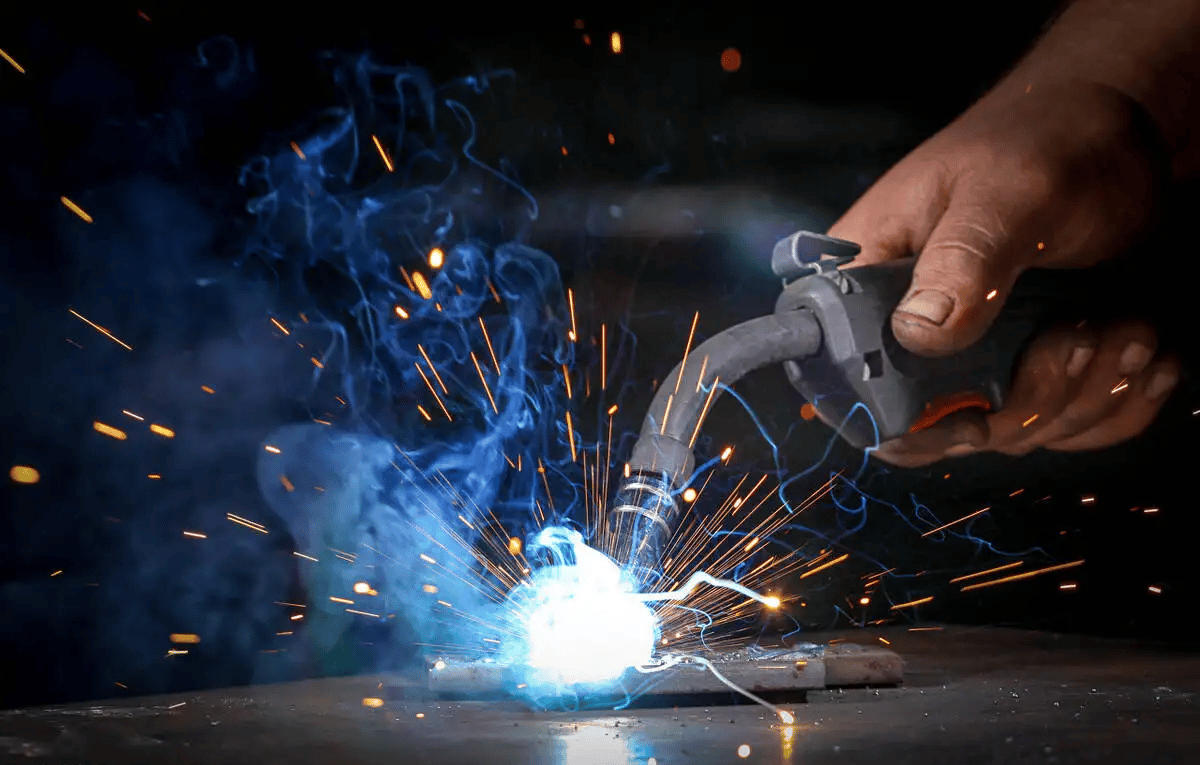Cutting-edge Strategies to Fillet Weld Inspection and Screening: Enhancing Weld High Quality and Compliance Standards
In the realm of welding, the quality and honesty of fillet welds play a critical role in guaranteeing the structural strength and reliability of various industrial parts. With the consistent drive for enhanced performance and compliance with rigorous criteria, the exploration of cutting-edge techniques to fillet weld evaluation and testing has come to be essential.
Advanced Non-Destructive Screening Techniques
Making use of modern modern technologies, advanced non-destructive testing techniques play an essential duty in ensuring the honesty and top quality of fillet welds. These approaches, such as phased array ultrasonic testing (PAUT) and magnetic particle screening (MPT), offer comprehensive insights right into the weld's interior framework without triggering any kind of damages to the material. PAUT, as an example, makes use of numerous ultrasonic elements to check the weld from different angles, offering a detailed visualization of prospective defects like absence of combination or splits.
By utilizing these advanced non-destructive screening strategies, weld inspectors can accurately examine the quality of fillet welds, making certain compliance with sector standards and policies. The capacity to find problems early on not only enhances weld high quality however also avoids pricey rework or failures in structural honesty, underlining the significance of these ingenious testing strategies in welding inspections.
Robotics and Automation in Examination
The assimilation of robotics and automation has actually changed the examination process for fillet welds, improving effectiveness and accuracy in quality analysis. Robotics supply specific control and repeatability in checking welds, guaranteeing reliable and consistent outcomes. Automated systems can be set to adhere to certain inspection paths, guaranteeing detailed coverage of welds and minimizing the threat of human error.
Robotic evaluation systems equipped with advanced sensors can identify and gauge weld functions with high precision, giving detailed data for evaluation. These systems can identify defects such as splits, absence of blend, and porosity, enabling timely rehabilitative activities to be taken. Additionally, robotics and automation permit for real-time information collection and analysis, giving prompt feedback to drivers and assisting in quick decision-making procedures.
Additionally, the usage of robotics and automation in fillet weld inspection enhances overall efficiency by reducing assessment times and enhancing evaluation throughput. By improving the evaluation procedure, manufacturers can ensure weld high quality and compliance standards are fulfilled effectively, inevitably causing cost financial savings and enhanced product top quality.
Utilizing Expert System for Analysis
Man-made knowledge plays a critical duty in improving the performance and accuracy of evaluation in fillet weld assessment processes. AI algorithms can rapidly refine substantial amounts of data from weld evaluations, finding flaws or variances that might be challenging to determine with the nude eye - Welding Inspection Racine.
Additionally, AI systems can pick up from past assessment data, constantly improving their capability to recognize potential flaws and deviations in fillet welds. This adaptive knowing capacity improves the total quality assurance process, reducing the possibility of human mistake and making sure that welds meet the required standards. By integrating fabricated knowledge into fillet weld evaluation, industries can achieve higher levels of efficiency, uniformity, and compliance in their inspection techniques.
Portable Devices for On-Site Evaluation
 Enhancing field evaluation effectiveness, the adoption of portable tools changes on-site evaluation processes for fillet welds. These devices supply adaptability and convenience, allowing assessors to carry out thorough assessments in various places, consisting of remote or tough settings. Portable devices such as ultrasonic screening gadgets, magnetic fragment assessment equipment, and electronic radiography systems give real-time data and high-resolution imaging capacities, allowing fast decision-making and instant comments on weld top quality.
Enhancing field evaluation effectiveness, the adoption of portable tools changes on-site evaluation processes for fillet welds. These devices supply adaptability and convenience, allowing assessors to carry out thorough assessments in various places, consisting of remote or tough settings. Portable devices such as ultrasonic screening gadgets, magnetic fragment assessment equipment, and electronic radiography systems give real-time data and high-resolution imaging capacities, allowing fast decision-making and instant comments on weld top quality.One considerable benefit of mobile tools is their capability to improve inspection procedures, lowering downtime and boosting total productivity. Inspectors can quickly move these tools to different click this task sites, getting rid of the need for transferring heavy equipment or components to off-site facilities. Additionally, the mobility of these devices advertises cost-effectiveness by minimizing transport costs and speeding up inspection timelines.
Furthermore, using mobile tools for on-site evaluation promotes positive quality assurance actions, as inspectors can immediately recognize and deal with any type of prospective welding defects or discrepancies. By incorporating these innovative modern technologies into on-site evaluation techniques, welding experts can guarantee compliance with industry requirements and improve weld quality, inevitably leading to improved structural stability and safety in different welding applications.
Assimilation of Information Administration Equipment
Having actually optimized on-site inspection processes with the usage of mobile devices, the next phase entails the seamless combination of data monitoring that site systems to further boost efficiency and data analysis capabilities in fillet weld examination and testing. Welding Inspection Racine. By integrating information administration systems right into the examination procedure, organizations can improve information collection, storage space, and analysis. This combination permits real-time tracking of weld top quality, prompt identification of issues, and punctual decision-making to remedy any issues that may arise throughout the inspection process
Data administration systems play a vital function in centralizing examination data, facilitating very easy gain access to for accredited employees, and making certain data integrity and safety and security. With the integration of these systems, inspectors can create thorough records, track historic data for trend evaluation, and improve total process performance. The combination of data monitoring systems enables smooth communication between various stakeholders involved in the inspection process, promoting collaboration and enhancing total top quality control steps. Eventually, the combination of data monitoring systems serves to raise the requirements of fillet weld evaluation and screening, making certain compliance with sector guidelines and enhancing weld quality.
Final Thought
Finally, ingenious approaches to fillet weld inspection and screening have substantially improved weld quality and compliance requirements. Advanced non-destructive screening approaches, robotics, automation, artificial intelligence, mobile devices, and information management systems have revolutionized the means weld evaluations are performed. By utilizing these innovations, markets can guarantee that welds meet the needed quality requirements and laws, eventually enhancing general efficiency and safety in welding procedures.

By employing these sophisticated non-destructive screening methods, weld inspectors can accurately assess the high Go Here quality of fillet welds, ensuring compliance with market criteria and policies. Portable tools such as ultrasonic screening devices, magnetic bit inspection tools, and electronic radiography systems provide real-time data and high-resolution imaging capabilities, making it possible for fast decision-making and instant comments on weld top quality.
Having optimized on-site examination procedures with the use of portable tools, the next phase includes the seamless assimilation of information management systems to even more improve performance and data evaluation capabilities in fillet weld inspection and screening (Welding Inspection Racine). Eventually, the combination of data administration systems serves to raise the standards of fillet weld examination and testing, making certain conformity with industry guidelines and enhancing weld quality
 In conclusion, cutting-edge approaches to fillet weld evaluation and screening have significantly improved weld top quality and compliance standards.
In conclusion, cutting-edge approaches to fillet weld evaluation and screening have significantly improved weld top quality and compliance standards.